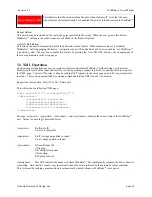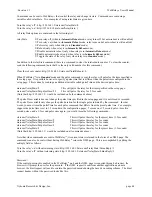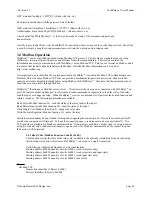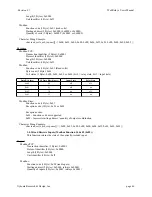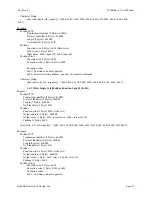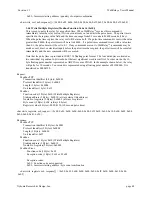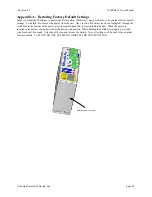
Revision 3.1
WebRelay
TM
Users Manual
control
, the Keep Alive option may be turned on to keep the TCP connection to the remote
WebRelay
TM
unit alive. If the connection is alive, commands sent to the remote unit will change the
state of the remote relay almost instantly (with a good network connection). If the connection is not
alive, commands sent to the remote unit will be delayed a few seconds while the connection is
being setup. There are three options available in this field.
I.
NO
: When this option is selected, the TCP connection between the two units will be
terminated if there is a time gap (more than about 50 seconds) between commands. Once
the connection is closed, the two WebRelay
TM
units must re-establish a connection before
the next command can be sent. This means that when the input voltage toggles, it may
take a few seconds for the remote relay to respond. In many cases, this delay may not be a
problem. This option uses the least network bandwidth (and is the most secure) because
communications only take place when the input voltage changes.
II.
YES (No TX State)
: When this option is selected, a message is sent to the remote unit
every 50 seconds to keep the TCP connection alive. The message does not contain the
state of the local input. If power is lost and the control voltage changes while the unit is
not powered, the new control voltage status will not be sent to the remote unit when the
power is restored. The state will not be updated until the next time the control input
changes.
III.
YES (TX State)
: When this option is selected, a message is sent to the remote unit
every 50 seconds to keep the TCP connection alive. This message will contain the current
state of the input. By sending the state of the unit, changes to the control voltage input
will eventually be sent to the remote unit, even if the change occurred during a power loss.
Transmit state is only valid for the ‘Remote Relay Options’
remote command equals
input, remote command opposite of input,
and
remote command equals local relay
. If
any of the other ‘Remote Relay Options’ are selected, the state will not be transmitted.
Note that when units are set up to require a control password, this password must be sent
each time the state is updated. When the option is selected to transmit the state of the
input each time the keep alive message is sent, the password will be frequently transmitted
over the network. This may not be a problem, but the user should be aware that the more
often the password is sent, the more opportunity hackers would have to capture the
password, decode it, and potentially use it to control the remote relay (especially in public
networks such as the Internet).
Xytronix Research & Design, Inc.
page 34
























